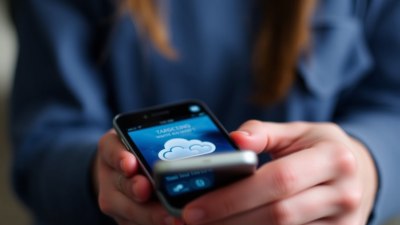Why Everyone Eats More Popsicles When the Vibe Feels Off
Explore why people tend to eat more popsicles when the vibe feels off and the psychological and social factors behind this curious behavior.

Image by asier-relampagoestudio on Freepik
Have you ever noticed that when the atmosphere feels tense or uncomfortable, more people seem to reach for popsicles? This intriguing phenomenon goes beyond mere coincidence and taps into our psychological, social, and even sensory behaviors. While popsicles are often associated with warm weather and carefree moments, they also appear as a comfort or distraction tool during moments when the vibe feels off. This article delves deeply into the reasons behind why people eat more popsicles when the atmosphere is uneasy and what this behavior reveals about human nature.
Associating Popsicles With Comfort and Familiarity
One of the primary reasons people gravitate toward popsicles during uncomfortable moments is the strong association of this frozen treat with comfort and nostalgia. For many, popsicles evoke childhood memories of simpler times, family gatherings, or fun summer days. When current social circumstances feel tense or awkward, turning to a familiar, comforting object like a popsicle can provide an instant emotional anchor, helping to soothe feelings of anxiety or discomfort.
The connection between nostalgic comfort foods and emotional relief is well-established in psychology. Popsicles, with their sweet flavors and cooling sensations, can momentarily transport individuals back to those comforting moments, providing a subtle, low-effort emotional boost. This type of self-soothing behavior is especially common during situations where social demands are high, such as group conversations with conflicting opinions or corporate meetings where tension is palpable.
The Sensory Impact of Cold and Sweetness
Popsicles offer a unique combination of coldness and sweetness that can influence mood and physical sensations in unexpected ways. The cold temperature serves as a mild physical distraction, diverting attention from emotional discomfort to a tangible sensory experience. This effect is similar to why people might hold ice or use cold compresses to regulate emotions or calm nerves.
Additionally, the sweetness triggers dopamine release in the brain, activating the reward circuit and producing pleasant sensations. This biochemical response can transiently mask feelings of discord or awkwardness present in the environment. Thus, when a vibe feels off, the sensory duality of cold and sweet offers relief that encourages people to eat more popsicles as a coping mechanism.
Popsicles as Social Distraction and Icebreaker
The act of eating a popsicle also serves as a subtle social lubricant during uncomfortable group situations. When the vibe feels off, people often look for ways to break the tension or avoid awkward silences. Offering and sharing popsicles can become a natural facilitator of social interaction. It gives individuals something to focus on other than the fraught social dynamics.
Moreover, eating a popsicle can be a non-verbal way to communicate vulnerability or a need for comfort without directly addressing the awkwardness. This can help smooth over social friction by signaling, “I’m here, but I’m also seeking comfort.” In group settings, this mutual, low-key activity can help ease tension by shifting attention to a shared, pleasurable experience.
Physiological Effects That Promote Calmness
Cold stimuli like popsicles can influence the nervous system in subtle ways. The cold sensation on the tongue and mouth activates the trigeminal nerve, which is known for transmitting sensory information related to the face. This stimulation can trigger physiological reactions such as slowed heart rate and reduced stress levels. Therefore, in moments when the vibe is off and anxiety increases, eating cold treats like popsicles can help regulate these autonomic nervous responses.
Additionally, the act of licking or sucking on a popsicle may simulate the calming aspects of infant feeding behaviors, which can induce a relaxation response. This response might be an evolutionary vestige where such oral actions signaled safety and contentment. Hence, popsicles provide a mild but effective way to self-regulate emotional states.
Compensating for Social Discomfort Through Oral Behavior
Eating or chewing behaviors are often used to manage social stress. Just as nail-biting, chewing gum, or fidgeting serve to offset nervous energy, consuming popsicles offers a socially acceptable oral activity that can distract from discomfort. The consumption can be slow or deliberate, giving the eater a physical outlet to vent or redirect anxious energy without verbalizing it.
This oral motion also occupies the mouth, possibly preventing the individual from saying something that might escalate tensions or awkwardness in a sensitive social setting. In environments where the vibe feels off, this can be particularly useful to maintain social harmony and allow time for better emotional processing.
Pop Culture and Media Influence
Pop culture has played a subtle role in embedding popsicles into moments of emotional intensity or social awkwardness. Numerous films, TV shows, and advertisements often depict characters eating popsicles or similar treats during dramatic, romantic, or uncomfortable situations—thereby reinforcing this behavioral pattern.
This repeated association through media can condition people subconsciously to reach for popsicles when they experience social dissonance or negative vibes, equating the treat with relief or emotional support. Pop culture thus acts as an indirect driver of the phenomenon, blending sensory gratification with narrative comfort.
Environmental and Contextual Cues
Temperature and setting also significantly influence why people might consume more popsicles when the vibe is off. For example, at summer social gatherings like outdoor parties or barbecues, the ambient heat can make popsicles an appealing choice regardless of mood. However, when social tension rises, their use as a calming or distracting tool becomes even more prominent.
Moreover, the casual, hand-held nature of popsicles makes them convenient for fleeting social environments where people want to eat without committing to a full meal or structured snack. This convenience means in socially tense moments, the popsicle emerges as the easy option to manage both environmental and emotional discomfort.
The Role of Habit and Availability
Repeated behavior can turn into habit, and if popsicles are readily available in a social setting, people are more likely to consume them irrespective of the vibe. However, if a pattern has developed where people associate a bad vibe with eating popsicles, this habit reinforces itself.
In jobs, schools, or households where popsicles are commonly stocked, individuals may unconsciously reach for them as a previous successful coping strategy, habitually eating more when the vibe feels off. Availability and prior positive experiences combine to increase consumption in these scenarios.
Psychological Comfort Food Properties
Foods high in sugar, such as popsicles, are well-known psychological comfort foods. Their consumption can lower cortisol, the stress hormone, providing a biochemical basis for their calming effect. This physiological pathway is critical to understanding why people might unconsciously increase popsicle consumption amid stress or off vibes—seeking quick biochemical relief.
Since popsicles are often considered treats rather than regular foods, their limited availability boosts their desirability as a reward during times of distress. This reward aspect further incentivizes eating more when tension spikes in social contexts.
The Paradox of Eating Cold When Feeling Hot
Another subtle factor is the paradoxical comfort of cool sensations when emotional tension produces a 'hot' feeling inside. Stress, embarrassment, or anxiety generates increased body temperature and flushing sensations. Popsicles provide immediate physical cooling, counteracting that internal heat and helping the person regain equilibrium through sensory contrast.
This sensory paradox explains why cold treats like popsicles can feel especially gratifying when the vibe is off, providing tangible relief that complements emotional needs.
Broader Implications on Human Behavior and Food Choices
This tendency to eat more popsicles during off vibes is just one example of a broader human behavioral pattern where food choice is intertwined with emotional and social contexts. People often regulate emotions through food, consciously or subconsciously, selecting items that meet emotional, sensory, and social needs simultaneously.
Understanding why popsicles become more popular under tense social atmospheres offers insight into how humans adapt their behavior to maintain social cohesion and personal emotional balance. This knowledge can inform food marketers, event planners, and psychologists studying emotional eating and social dynamics.
Alternative Comfort Foods Versus Popsicles
While chocolates, chips, or hot drinks are commonly recognized comfort foods, popsicles occupy a unique niche because of their coolness and light texture. Unlike heavier comfort foods, they provide less guilt and fewer post-consumption sluggish effects, making them an attractive choice for those seeking emotional comfort without negative aftereffects.
The ephemeral, transient nature of popsicles also suits temporary emotional states. Since they are usually eaten quickly and do not linger long in taste or texture, they help people address momentary discomforts, such as a bad social vibe, without creating long-term cravings or associations.
The Influence of Group Dynamics and Peer Behavior
Group behavior can amplify popsicle consumption when the vibe is off. If one person starts eating a popsicle to cope with tension, others may subconsciously follow suit through social mimicry—an instinctive human tendency to copy behaviors in group settings. This social contagion effect can rapidly increase popsicle eating during uneasy group interactions.
Moreover, sharing popsicles can serve as a bridge to rebuilding rapport, signaling openness or willingness to reconnect despite tension. Thus, group dynamics heavily influence the rise in popsicle consumption during awkward moments.
Impacts on Health and Wellbeing
While the increased consumption of popsicles might provide psychological comfort during stressful social situations, it carries health considerations. The sugar content, although often lower than other sweets per serving, combined with the frequency of consumption, can contribute to dental issues or blood sugar fluctuations if eaten excessively.
Being mindful about these health impacts is important, though the emotional benefits may outweigh these concerns in occasional situations. Encouraging balance and healthier popsicle alternatives can help mitigate risks while preserving their comforting role.
Variations Across Cultures and Regions
Interestingly, the tendency to eat more popsicles when the vibe feels off also depends on cultural contexts and regional food preferences. In some countries, similar cold, sweet treats assume this role, such as kulfi in South Asia or gelato in Italy.
These regional analogs fulfill similar psychological and social functions, highlighting a universal human inclination to use pleasurable frozen treats during social or emotional discomfort. Cultural nuances determine the exact food choice but the underlying behavior remains consistent globally.
Research Perspectives and Future Studies
Despite anecdotal evidence and observable patterns, formal research into this specific behavior—eating more popsicles when the vibe feels off—is limited. Future studies could explore neurological responses to cold sweet treats during social discomfort, as well as longitudinal tracking of emotional eating patterns in group settings.
Such investigations would enrich understanding of how sensory inputs influence social emotional regulation and could inform therapeutic practices or social event designs to foster healthier coping strategies.
Practical Tips for Managing Off Vibe Moments
If you find yourself or others eating more popsicles when the vibe feels off, consider these practical tips to manage the underlying discomfort effectively. First, acknowledge your emotional state without judgment. Recognizing tension or awkwardness is the first step toward addressing it.
Second, use the popsicle as a temporary aid but combine it with mindful social interactions, like making eye contact or engaging in light conversation to improve the atmosphere. Third, balance popsicle consumption with water or healthy snacks to maintain physical wellbeing.
Finally, if you are organizing social environments, provide popsicles as an accessible comfort tool but also foster a positive and open vibe through activities or seating arrangements to reduce the occurrence of tension altogether.
In summary, the increased popsicle consumption when the vibe feels off is a multifaceted phenomenon rooted in psychological comfort, sensory distraction, social cues, physiological regulation, and cultural practices. Understanding this behavior sheds light on human coping mechanisms and the subtle ways food intersects with emotion and social experience.











